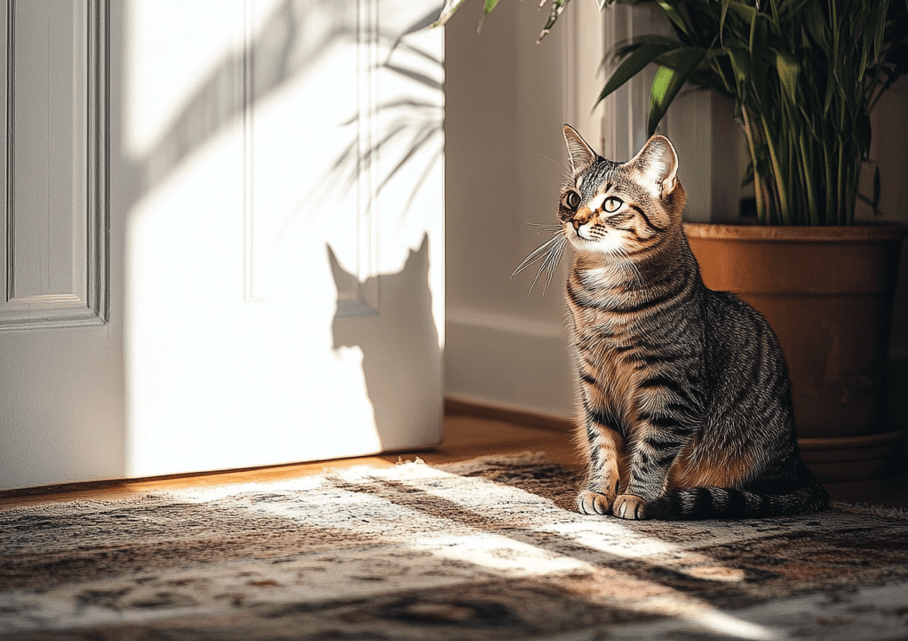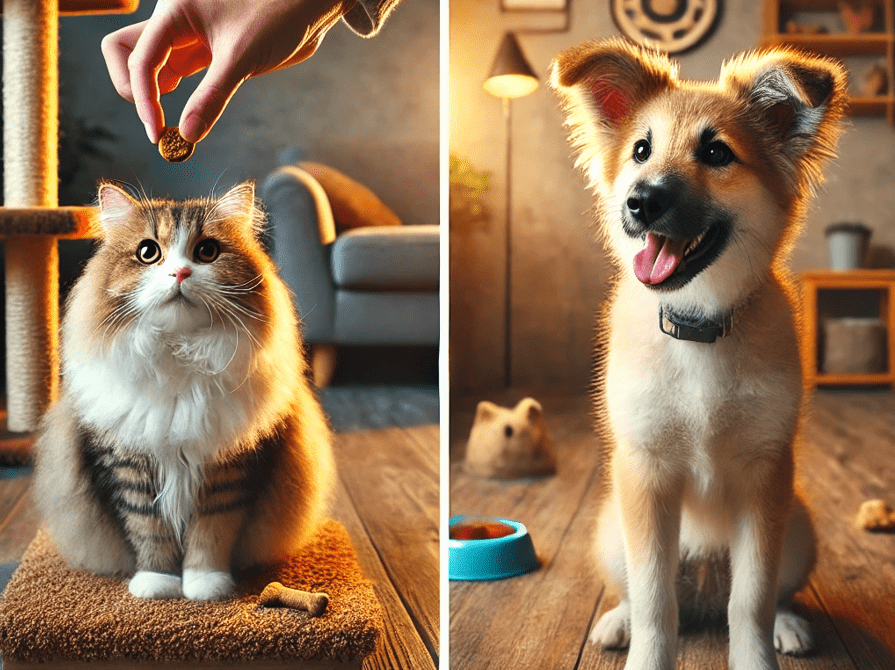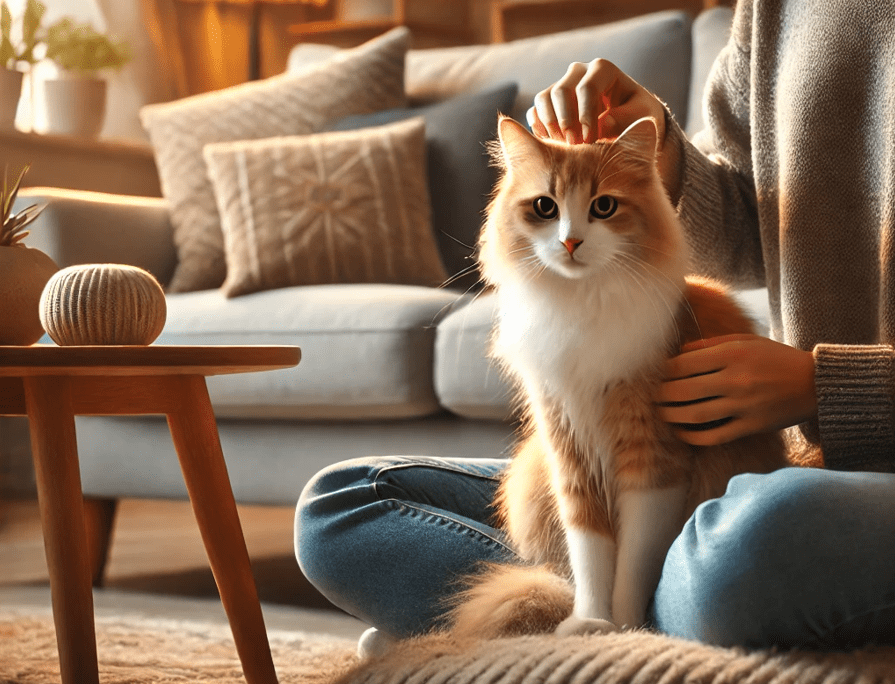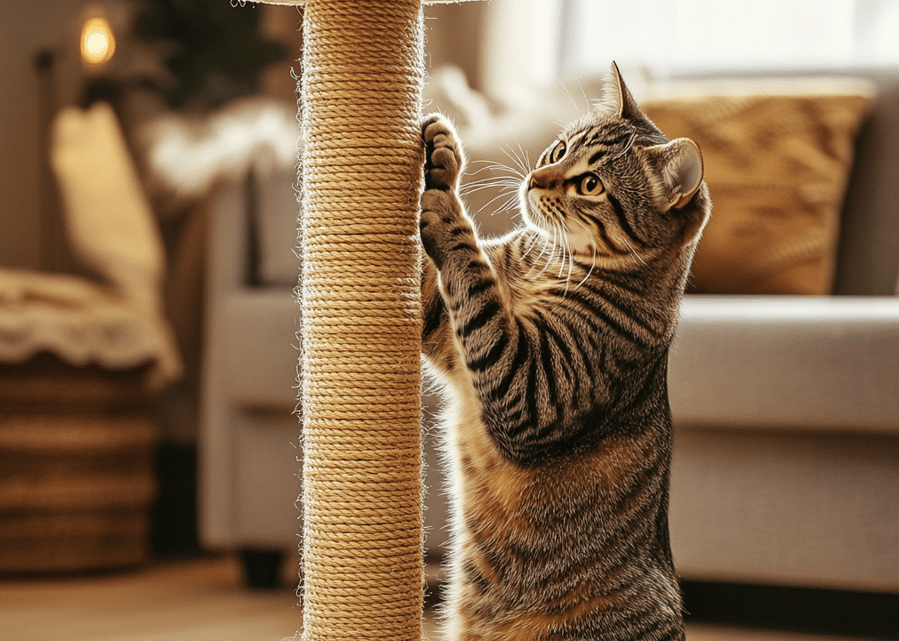
Learn about the cat scratching post training tips to help your cat develop healthy scratching habits while protecting your furniture from damage. A big part of training your cat is to teach him how to use a scratching post. First of all, you need to choose a type of scratching post that your cat is naturally attracted to. This eliminates stages in training, making the whole thing less of a headache if you pick the correct post. When you find the right scratching post, use these tips to get your cat to scratch it and not your furniture or carpet.
Guide to Training Success: How to Place Cat Scratching Posts
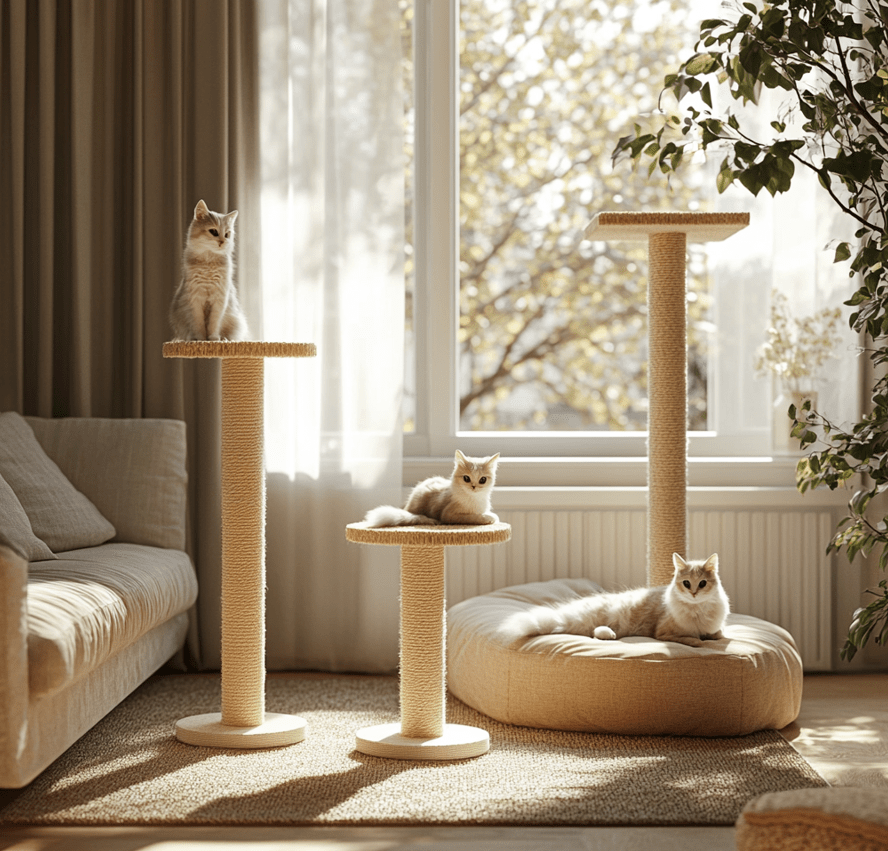
In order to get your cat to use her scratching posts correctly, you must keep them in the best places in your home. Correct placement is the key, and kittens may help you find the best locations. Although humans tend to put scratching posts away in corners or less visible areas of the home, those places may not suit your cat’s instincts. Looking at it from your cat’s point of view, it’s easy to see what makes some spots more suitable than others.
Reasons Why Cats Scratch Things
 Territorial Communication:
Territorial Communication:
They scratch to mark their territory, creating scratch marks that are visible to others, as well as depositing scent from glands in their paws. Other cats can read these signals easily. That’s why your cat isn’t likely to pick a hidden corner to scratch. Instead, she’ll want an upright, tall, and heavy scratching surface in an area of your home that you and your family traverse frequently. It fulfills her instinct to send clear territorial signals. Once your cat uses the post regularly, then you can slowly move the post (over the course of several weeks) to a more visually appealing location within your home.
Stretching and Exercise:
Scratching is also beneficial for cats as it helps to stretch their muscles, including those in their shoulders, toes, and feet. They do this immediately after waking up, making where they like to sleep an ideal place for a scratching post.
Redirecting Destructive Scratching:
If your cat is scratching a certain spot on the carpet, you can redirect her behavior by putting a scratching post or pad there. Because she’s already partial to that spot, it makes it more likely she’ll use the post instead of the carpet. If she’s scratching furniture, for instance, then cover that area with a heavy, well-tucked blanket to deter her and put a scratching post right in front of it. You can gradually relocate it (roughly an inch a day) to a more appropriate spot once she begins regularly using the post for a week or two.
Multiple Scratching Options:
By offering several scratching posts around your home, the risk of your cat ruining your furniture or carpets is greatly diminished. If your cat is already scratching inappropriate objects, pay attention to her preferences. Are the scratches more on the high side or low side? Is it on vertical, horizontal or angled surfaces? Use this information to determine the best type of scratching post for your cat and where to put it ideally in the same location. Cats like to scratch on all kinds of surfaces vertical, horizontal, angled and might even choose the oddest places like under beds or in closets.
How to Encourage Your Cat to Use the Scratching Post
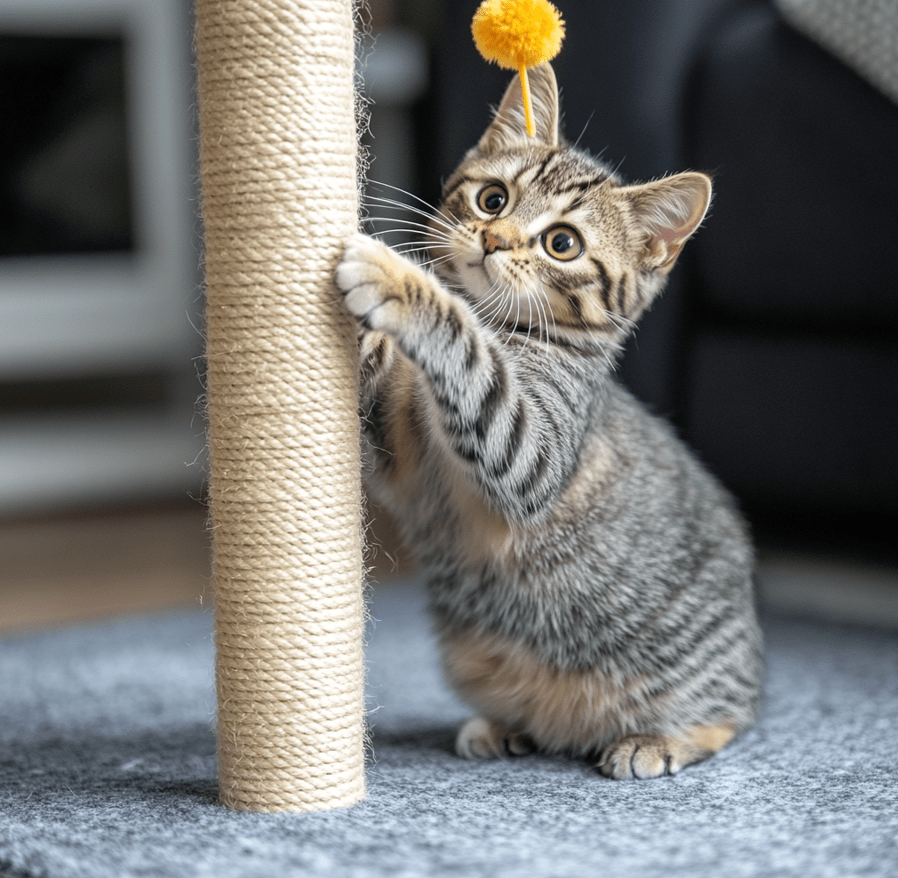
If your cat isn’t immediately thrilled with her new scratching post or seems only mildly interested, don’t be discouraged. Cats usually require a little encouragement to understand that the scratcher surface is the best thing to use. Here are some tips that might help you start using your new scratching post regularly with your cat:
1.Catnip:
If you have cats, you know they can be highly motivated by catnip. Various types are available. And if you’re paying the extra price for catnip, sprinkle loose-leaf catnip on the base and top of the scratching post if your cat likes it. As your cat licks or sniffs the catnip, she’s likely to start kneading with her paws. By doing this, she learns that this particular post is appropriate scratching material, which makes her more likely to use it again.
2.Incorporate Playtime:
Using play near the space where you have the scratching post may teach your cat to associate it with fun and excitement. When she plays, use a wand toy to encourage her to reach up and put her paws on the post. You can also set her favorite toy on top of the post to encourage her to climb and explore. Eventually, she will also start liking to scratch the post.
3.Start with the Post on Its Side:
If your cat has never seen a scratching post up close, try setting it on its side instead as an introductory step. In this position, using catnip and interactive toys will help get her attention while the post is kept in this position. Once you’ve used it consistently for a couple days, you can stand the post upright for a different type of fun.
4.Multiple Cats, Multiple Posts:
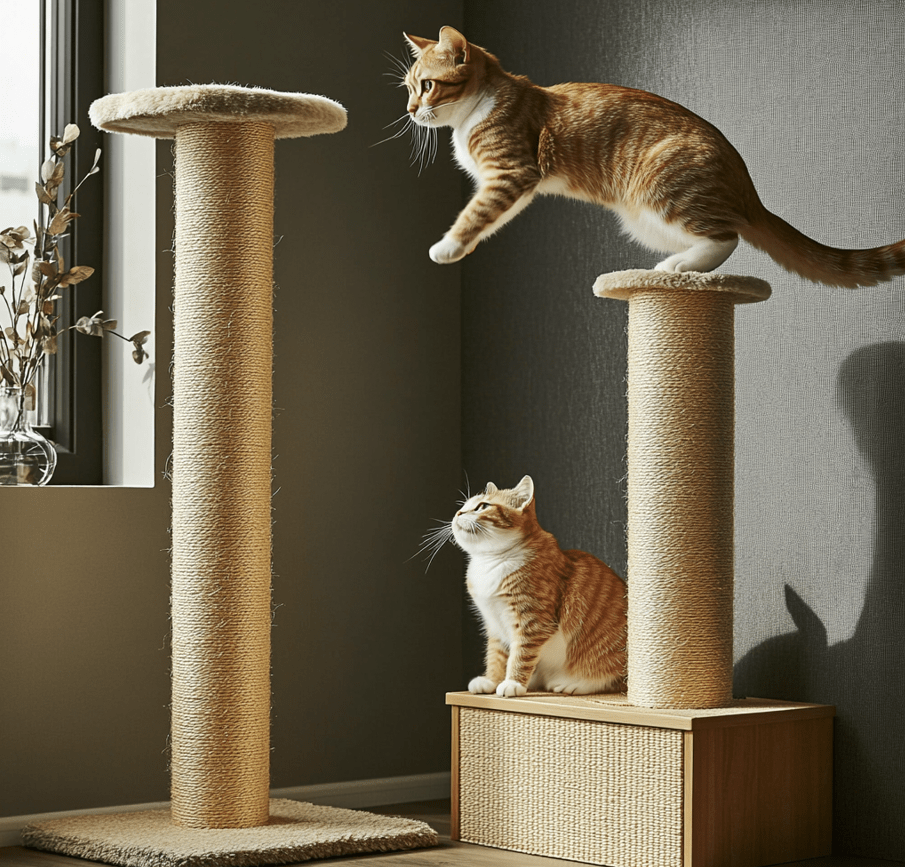
If you have multiple cats, get multiple scratching-posts. Engage in group play by throwing small toys or balls around the posts. It not only entertains them but helps them also connect the dots with the posts.
5.Use Treats as Rewards:
Treats are a powerful motivator for many cats, and can be useful when training. Start by reinforcing your cat for even just sniffing or exploring the post. Gradually reward her for putting her paws up on it then later scratching it. You can also put treats on top of the post so that she has to climb and explore to reinforce that the post is a positive rewarding object.
6.Combine with Feliway:
To assist even more with your task, you might consider Feliway. Feliway is a spray that imitates feline facial pheromones. Spray it on household objects your cat is likely to scratch, as well as the scratching post itself. This two-pronged approach trains your cat that the post is the ideal scratching surface, and plays hard to get with furniture.
What Doesn’t Work:
Forcing your cat’s feet onto the scratching post usually doesn’t help. Cats are solitary animals and like to check things out when they are ready. This causes them to avoid the post since they are handling their paws this way. This cause of clicking on the post is often avoided. But very young kittens sometimes respond to gentle guidance, especially when there is no older cat around who can show them how to use it properly. For the majority of cats, play and positive reinforcement are much more successful approaches.
With these strategies in place together, you will be able to successfully train your cat to those scratching posts without damaging any of your furniture while also meeting the needs of your feline companion.
Adverse Effects of Negative Training Methods
A lot of training methods for cats are designed to discourage potential bad habits by pairing them with an unpleasant experience. Examples include spraying a cat’s face with water, making loud noises with items such as coins in a can, using mouse traps to scare or injure a cat, yelling, hitting and so forth. But most of these approaches to negative reinforcement have little effect on cats, and can even result in adverse effects or potential injury.
This can often cause stress in cats, leading to the manifestation of behaviors that humans may not want to tolerate. Stressed-out cats, for example, may pee or poop outside their litter box, preferring to soil carpets or your personal effects. It may also lead to more scratching on furniture or other household products. In severe instances, cats may withdraw, hide often, or stop eating. There are certainly benefits of treating someone but if the goal is behavior change, then negative reinforcement is always going to be less effective than positive reinforcement. Instead of punishing unwanted actions, reward and encourage the behaviors you want to see, like using a scratching post.
Final Thoughts
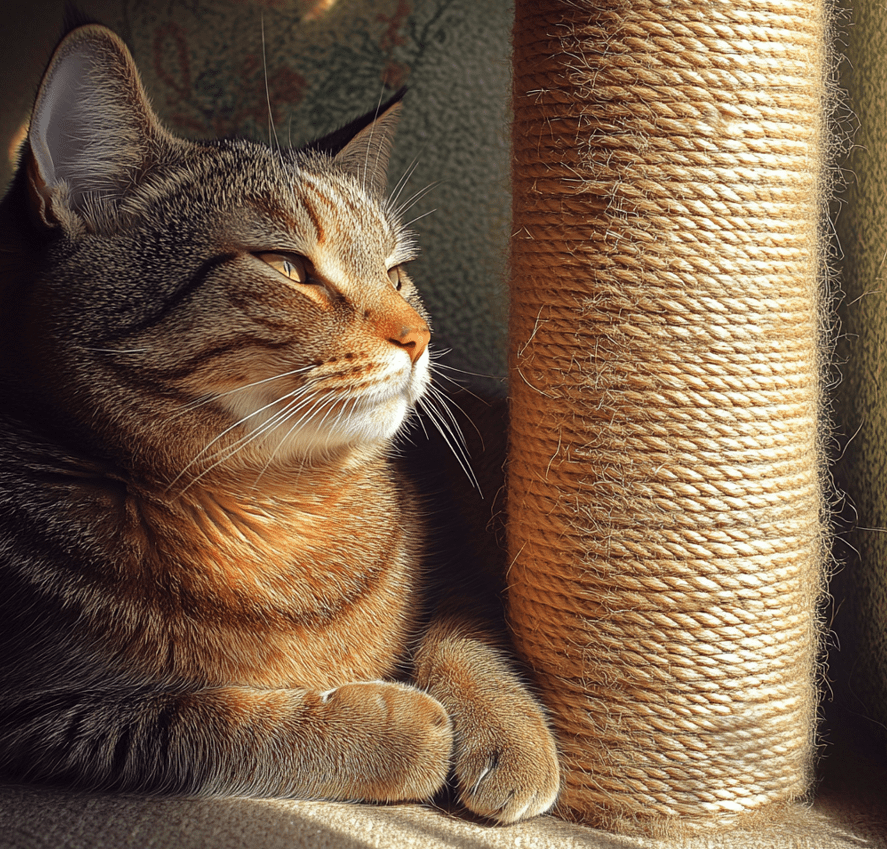
If you’ve done all the things recommended to teach them to use a scratching post but they are just not interested, try moving the scratching post to a different area before you give up. Putting it near a window where your cat can observe birds or other critters often generates curiosity and excitement to scratch.
And with time, gentle attention and plenty of praise, your cat will probably learn to forget about your furniture and carpets and shift her efforts to her scratching post. A sprinkle of creativity combined with some positive reinforcement can aid you in building good habits with your cat.

